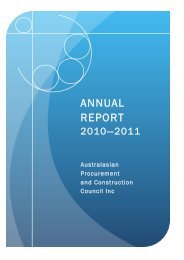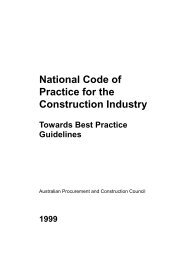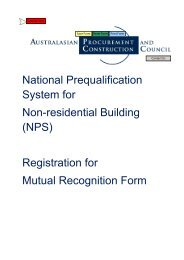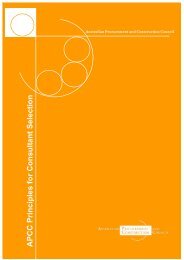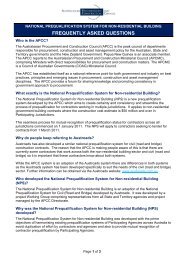Improving Security of Payment Building and Construction Industry
Improving Security of Payment Building and Construction Industry
Improving Security of Payment Building and Construction Industry
- No tags were found...
Create successful ePaper yourself
Turn your PDF publications into a flip-book with our unique Google optimized e-Paper software.
5. Pro<strong>of</strong> <strong>of</strong> <strong>Payment</strong> Page 70National Public Works Council Inc<strong>Improving</strong> <strong>Security</strong> <strong>of</strong> <strong>Payment</strong> in the <strong>Building</strong> <strong>and</strong> <strong>Construction</strong> <strong>Industry</strong>Clearly a proper alternative dispute resolution mechanism is required in order toh<strong>and</strong>le disputes at the earliest opportunity.5.8.5 The ramifications <strong>of</strong> being seen to interfere in the contractual relationshipbetween a Head Contractor <strong>and</strong> SubcontractorIf a Principal was to interfere in the contractual relationship between a HeadContractor <strong>and</strong> Subcontractor, an important issue that arises is the ramification thatmight flow from such an interference. An interference in this context is perceivedby the Head Contractor as reducing his contractual negotiability with theSubcontractors.If a proper alternative dispute resolution mechanism is instituted pursuant to acontract, then it is submitted that there should not be any significant ramificationsdue to interference by the Principal with any contractual relationship between theHead Contractor <strong>and</strong> the Subcontractor. Indeed, if a trust is set up pursuant to acontract or other direction, an interference with that contractual relationship hasalready taken place. It would seem necessary that some interference by thePrincipal or some other third-party to the dispute would be preferable, rather than nointerference at all, if the dispute is not resolved. To leave it to the parties themselvesto resolve the dispute may not provide a quick dispute resolution mechanism.Interference connotes some form <strong>of</strong> disruptive or unwarranted influence whereas, inactual fact, interference may have the reverse effect <strong>and</strong> perhaps is better phrased asbeing a "constructive involvement" in the dispute resolving process.5.8.6 How is a Principal to know if a dispute between a Head Contractor <strong>and</strong>Subcontractor has been settled satisfactorily without interfering ?The simple answer to this question may be that the Principal finds out that thedispute was in existence <strong>and</strong> has settled simply by the Subcontractor or the HeadContractor requesting payment.Contracts between the Principal <strong>and</strong> the Head Contractor <strong>and</strong> the Head Contractor<strong>and</strong> the Subcontractor, could provide that where there are disputes between theparties, those disputes must firstly be notified to the Principal <strong>and</strong> secondly,resolution <strong>of</strong> the dispute must also be notified to the Principal. There could also bea contractual term that the Principal be involved directly in the dispute resolutionprocess himself.It would seem to be in the Principal's interest to be involved with a dispute at theearliest opportunity, so that the dispute resolution process could be put in placeexpeditiously <strong>and</strong> with the least amount <strong>of</strong> cost. Otherwise, the construction time onthe project may be blown out <strong>and</strong> deadlines not reached.Further, disputes between Head Contractors <strong>and</strong> Subcontractors may create somecashflow difficulties or budget difficulties for the Principal during the constructionprocess, as deadlines <strong>and</strong> construction targets are not met. Indeed, cashflow <strong>and</strong>budget difficulties may also fall upon Subcontractors lower down the contractual


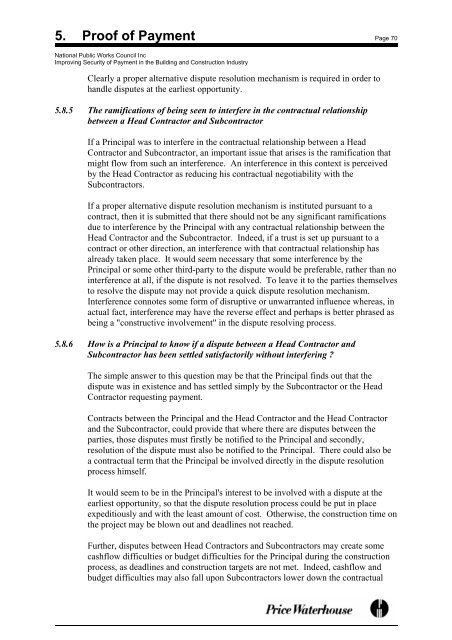
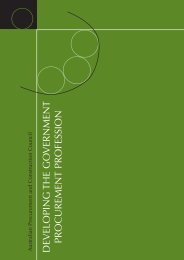
![NATIONAL COST ADJUSTMENT PROVISION EDITION 2 [NCAP2]](https://img.yumpu.com/48266135/1/184x260/national-cost-adjustment-provision-edition-2-ncap2.jpg?quality=85)



